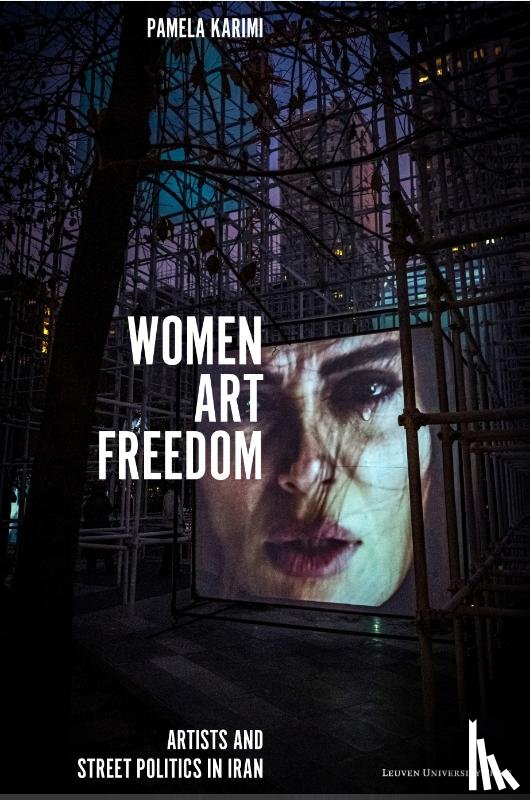Omschrijving
Artists' vital role in shaping nonviolent resistance in Iran Women, Art, Freedom offers an insightful look at the 2022 Woman, Life, Freedom uprising in Iran, sparked by the tragic murder of Jina Mahsa Amini at the hands of the "morality police" for violating hijab rules. Beyond its feminist undertones and the remarkable courage of the young protesters, what sets this uprising apart from previous ones is the abundant and diverse art it has inspired. This book, rather than merely analyzing the artworks that garnered attention on social media platforms, brings to light lesser-known grassroots artistic movements that played a crucial role within their immediate local communities. Engaging with primarily Iran-based artists, the book uncovers their role in shaping guerrilla interventions and street occupations and in articulating distinct forms of peaceful civil disobedience. By drawing on a broad spectrum of historical and theoretical sources, this book further reveals the origins and inspirations of Iran’s protest art. Focusing mainly on the interconnections between the public sphere, women’s bodies, and feminist viewpoints, Women, Art, Freedom underscores the vital role of artists in championing global justice and equality.PAMELA KARIMI is an associate professor of history of art and architecture at Cornell University. She is the author of Alternative Iran: Contemporary Art and Critical Spatial Practice.Karimi’s terrific book explores the nuances of language, color, calligraphy, graffiti, performance, artistic precedents, and gender identity as she takes up the current movement, finding art to be crucial to parafeminist imaginaries around the globe. Caroline Jones, Massachusetts Institute of TechnologyWomen, Art, Freedom offers a most compelling argument on how performative art and activism join hands in promoting a political posture of resistance. It spotlights through a deft analysis of a mass of data and evidence that is extraordinarily difficult to locate and gather, the unfolding of the uprisings that followed the murder of Jina Mahsa Amini on 16 September 2022 [...] Here is a book about art as a tool to inflict political and social change, to expose injustice, and to find reason to dream. Sussan Babaie, The Courtauld Institute of Art, University of London Women, Art, Freedom offers an insightful look at the 2022 Woman, Life, Freedom uprising in Iran, ignited by Jina Mahsa Amini's murder under the "morality police" for violating hijab rules. Beyond its feminist undertones and the remarkable courage of the young protesters, what sets this uprising apart from previous ones is the abundant and diverse art it has inspired. This book, rather than merely analyzing the artworks that garnered attention on social media platforms, brings to light lesser-known grassroots artistic movements that played a crucial role within their immediate local communities. Engaging with primarily Iran-based artists, the book uncovers the role artists played in shaping guerrilla interventions and street occupations and in articulating distinct forms of peaceful civil disobedience. In addition, by drawing on a broad spectrum of historical and theoretical sources, this book further reveals the origins and inspirations of Iran’s protest art. Finally, focusing mainly on the interconnections between the public sphere, women's bodies, and feminist viewpoints, Women, Art, Freedom underscores the vital role of artists in championing global justice and equality. 9 Introduction
Act One
45 Parading the Body on Sidewalks
Act Two
69 Hiding in Plain Sight
Act Three
93 Staging Citywide Protest Props
Act Four
113 Reclaiming Old Themes for New Protest Arts
Act Five
133 Reenacting Street Battles
Act Six
155 Documenting Urban Unrest
Act Seven
175 Camouflaging Defiant Words
Act Eight
199 Clashing with Faith in Broad Daylight
Act Nine
219 Opposing Art with Art in Cityscapes
Act Ten
237 Forecasting the Future
263 Coda
271 Notes
285 Select Bibliography
289 Index
ERRATUM : An error is noted in attributing a typographic work to Reza Abedini. While he also promoted the same style, the example cited on pages 179-180 was created by Bijan Seifouri.


